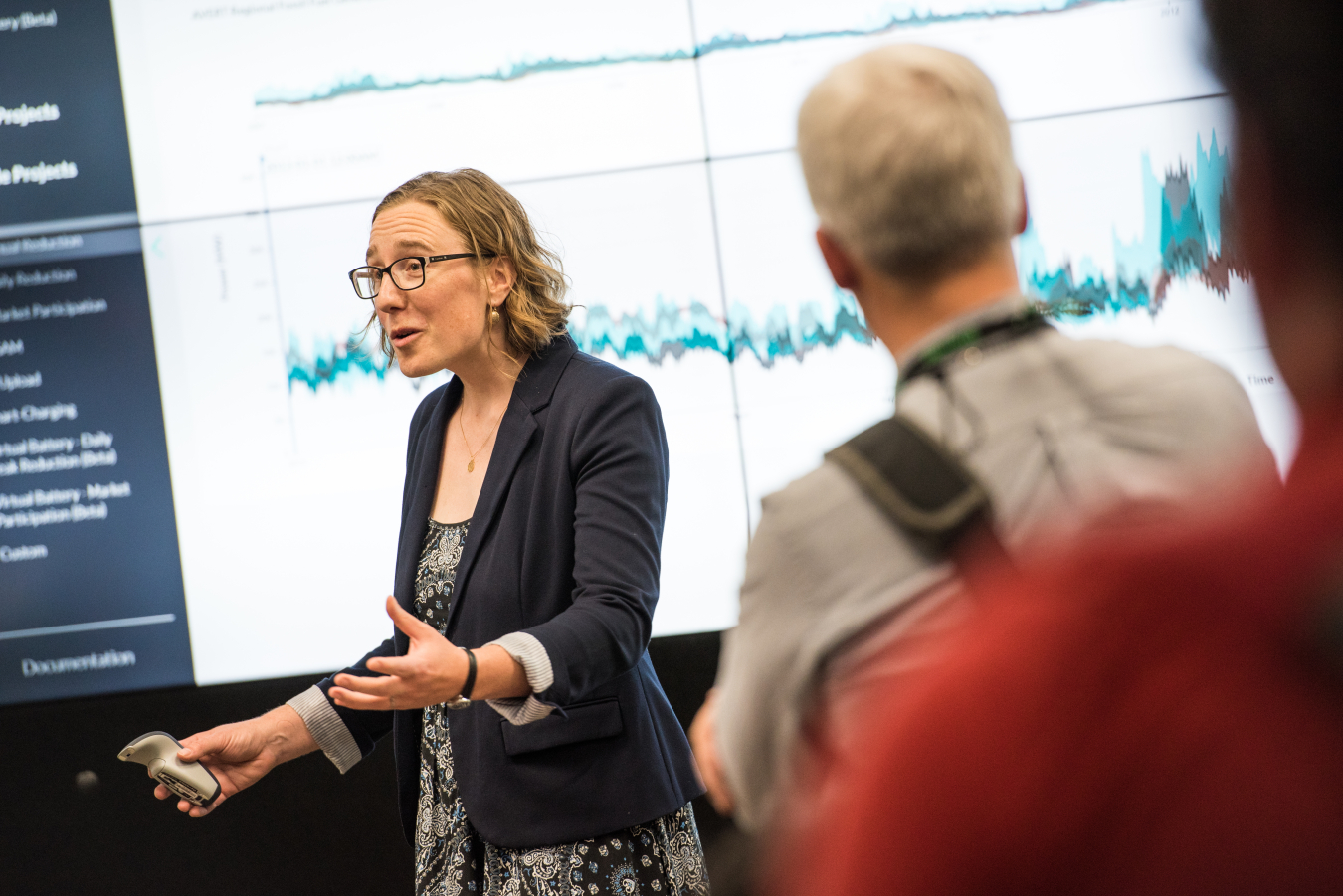Learn why Karen Studarus loves her job as an electrical engineer at Pacific Northwest National Laboratory.
October 18, 2019
As an electrical engineer, Karen Studarus works to make the power system more flexible, affordable, sustainable, secure, and resilient. Her research focuses on many aspects of the electric grid and the necessary tradeoffs that we make to deliver reliable power with responsible economic and environmental footprints. She received her B.S. in engineering from Harvey Mudd College in Claremont, California, and her M.S. in electrical engineering from the University of Washington (UW) in Seattle.
What inspired you to work in STEM?
I followed a twisty path to becoming a power systems engineer, in large part because the power system is so invisible that, for a long time, I didn’t know this was an option! I was interested in a lot of subjects, but I chose engineering, because it filled my tool bag and kept a lot of doors open. I went to a college where our work load was divided into equal thirds of foundational science, humanities, and a specific major. It’s rare to have a degree in just engineering without a named specialty, but I liked it, because it helped me learn to take any system and distill it down to its fundamental components and problem solve creatively. After I graduated, I worked doing biological detection in air and water samples, until I realized that the people who had more degrees got to choose what we tackled next. I went back to school to get a master’s degree and fell in love with the power system and the impact that it has on our quality of life.
What excites you about your work at the Energy Department?
I really love being able to tackle complicated problems as part of diverse, interdisciplinary teams. The power system is a juggling act across dramatically wide scales of time and space and impacts all of us. I get to do engineering, math, and physics, but also so much more like economics, government, software, and design. The grid has math and equations at its heart, but it involves people’s choices and collaborations with stakeholders and different ways to generate and distribute and store energy. We have such a deeply interconnected system that the flow of power doesn’t stop at artificial borders between towns and neighborhoods and power companies. Energy management makes choices that affect everyone, so I enjoy being able to study and design for the resilience of the total system.
How can our country engage more women, girls, and other underrepresented groups in STEM?
We need to show kids why STEM matters. Electricity, for example, is often introduced as a cool novelty, but if you just use it to make your hair stand up, who cares? Electricity becomes more interesting once you know what we can do with it. It’s about the life support machines in hospitals, the elevator that brings you to the top of a skyscraper, pumps to irrigate our crops, and the video chat connecting a family. Electricity is so much more than just moving electrons. It’s way too easy in STEM classes to write problems that only teach people to get to the next step in the curriculum. We lose valuable people to this, and it’s not necessary. When I was in college, the computer science program had a hard time recruiting and retaining women. They changed the type of applied questions in the introductory classes from cartoony games to impactful challenges, and by making the problems more applicable to real life, they started attracting a different type of student—including women—who saw what they could accomplish with that line of work and wanted to learn the science. That’s important. I think, had I seen the possibilities of power systems research then, I might have come to the power grid sooner.
Do you have tips you'd recommend for someone looking to enter your field of work?
Do an internship. Get connected and test drive different career options, including research in a national lab setting. Look for opportunities where you can add value to a project, see if you like what you’re doing, and try your hand at a lot of projects until something clicks.
When you have free time, what are your hobbies?
I love to hike and bike, play music with friends, and read great writing in all its forms.
Learn more about our programs & resources for women and girls in STEM at /women

